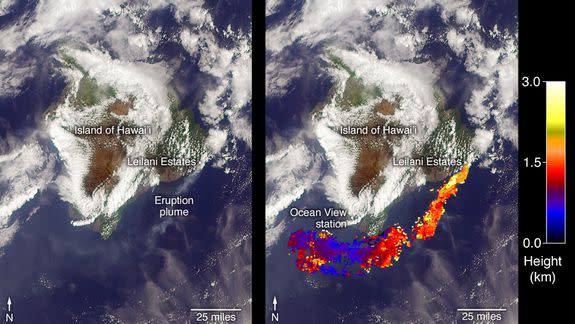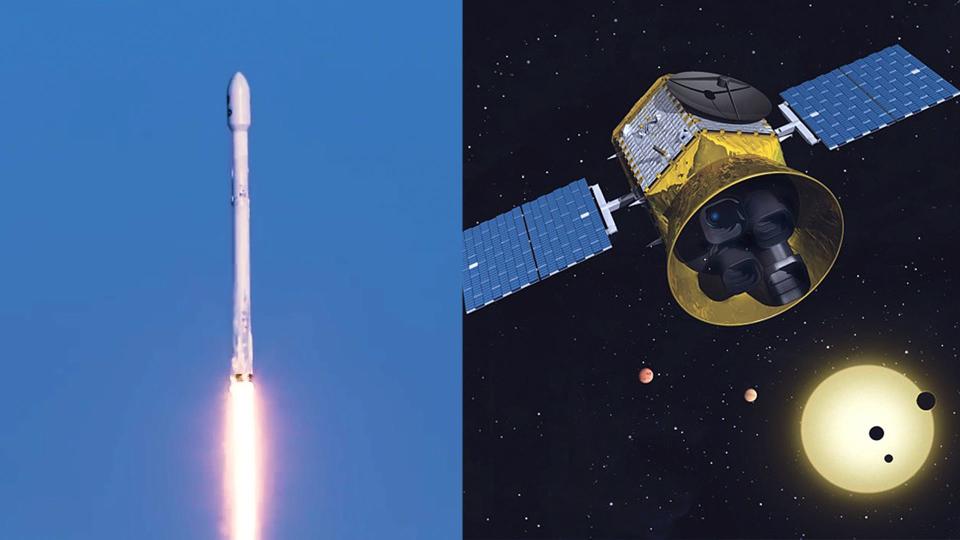An astronaut saw Hawaii's Kilauea volcano erupting from space. And he took a picture.

Hawaii's Kilauea volcano has been spewing plumes of ash and steam from its main vent and oozing lava into nearby neighborhoods since the beginning of May.
And now, even astronauts on the International Space Station can see the volcanic activity from orbit.
SEE ALSO: Lava shoots through a 500-foot-long fissure in the middle of a Hawaiian neighborhood
NASA astronaut Andrew Feustel — a current Space Station crewmember — snapped a photo of the volcano belching out a thick plume of steam tinged with a bit of ash from his post 250 miles above.
The vent photographed by Feustel is named Halema'uma'u but commonly called the "overlook vent," as it's a popular destination in Hawaii Volcanoes National Park.
It is easy to see the activity on Hawaii’s #Kilauea Volcano from @Space_Station. We hope those in the vicinity of the eruption can stay out of harm’s way. pic.twitter.com/osTn3fH073
— A.J. (Drew) Feustel (@Astro_Feustel) May 14, 2018
That said, no tourists are visiting the closed national park right now.
U.S. Geological Survey (USGS) volcanologists warn that this specific vent now has the realistic potential of erupting explosively.
Although the "robust plume," as described by USGS Hawaii Volcano Observatory scientist Tina Neal, might be visible from space now, it's not representative of the most powerful, rare explosive event that might be to come.
Instead, the lava lake inside the Halema'uma'u pit has continued to drop over the last week, allowing loose chunks of rock to fall hundreds of feet down into the lava. Once they tumble in, said Janine Krippner, a volcanologist at Concord University's Department of Physical Sciences, great plumes of steam are produced.
A few weeks ago, this lava lake level was extremely high and even began to overflow around April 22. Now, however, the level of lava in the lake has dropped dramatically, to nearly 1,000 feet beneath the vent's rim, as of May 9.

Image: NASA
"It's a really big hole and a lot more rocks can now fall in," said Krippner.
When these rocks hit the gaseous lava, it stirs up these gases, she said, resulting in the vibrant plume.
Volcanologists on the island are now warning about truly explosive activity from this overlook vent, which might occur when the lava drops beneath the tropical island's rich water table. This has happened before, most strikingly in 1924 when rock falls plugged the vent, and steam from the water table caused a massive pressure build-up — and explosion.
These sorts of eruptions are not nearly on the scale of the ominous and historically deadly volcanoes found along the meeting of tectonic plates, like Italy's Mount Vesuvius or Washington state's Mount St. Helens.
But locally, they can still be quite threatening. Nearly a century ago, rocks up to 14 tons were shot out of Halema'uma'u over a two and a half week period.
WATCH: NASA's TESS planet-finder satellite just rode a Falcon 9 to space


